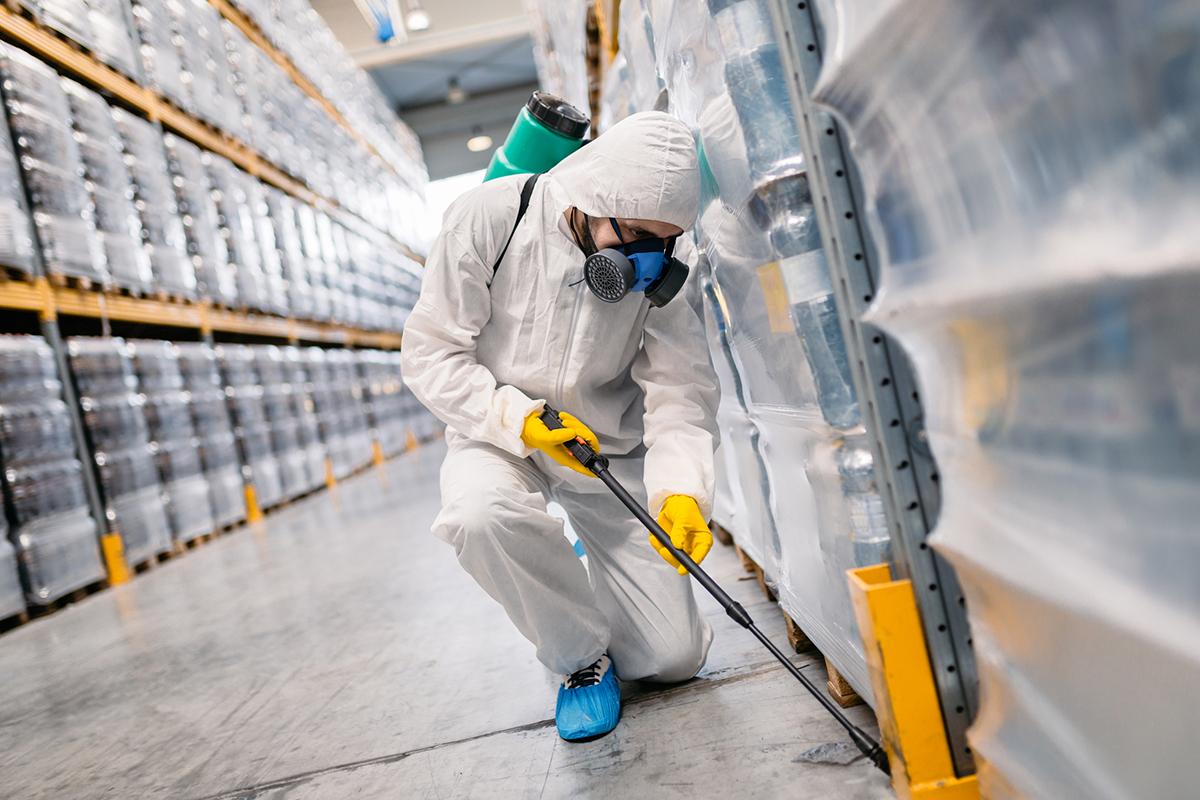Bed Insect Therapy Breakdown: Comparing Chemical Vs. Non-Chemical Solutions
In the realm of insect control, specifically when dealing with the consistent problem of bed insects, the choice between chemical and non-chemical treatment services can be an essential one. Both strategies offer distinct advantages and disadvantages, influencing aspects such as performance, safety and security factors to consider, and total expense. By checking out the nuanced information of each approach, a more clear understanding of which course to seek in dealing with a bed insect infestation can be acquired.
Effectiveness of Chemical Treatments
Chemical therapies for bed insect infestations have actually been widely recognized for their fast and potent effectiveness in eliminating these pests. When taking into consideration the efficiency of chemical therapies, it is vital to understand that they can give a extensive and fast service to a bed pest trouble.
In addition, chemical treatments have the benefit of offering recurring impacts, meaning that they can proceed to remove bed insects also after the preliminary application. This recurring action is specifically useful in combating any kind of possible re-infestations. Furthermore, the rapid activity of chemical treatments can bring relief to people facing serious bed pest invasions, permitting them to regain control of their home promptly.
Safety Issues With Chemical Solutions
When using chemical remedies for bed bug therapy is making sure the safety of occupants and the setting,One crucial aspect that calls for mindful factor to consider. While chemical therapies can be effective in removing bed bugs, they may present risks otherwise dealt with effectively. Among the key safety and security interest in chemical solutions is the potential injury they can create to human health. Direct exposure to specific chemicals used in bed pest treatments can result in respiratory problems, skin inflammation, or other adverse reactions, especially in people with pre-existing problems or sensitivities. Additionally, incorrect application or dosage of chemical pesticides can result in harmful residues sticking around in the cured area, posing long-lasting wellness threats to residents.
In addition, the environmental influence of chemical solutions is another substantial factor to consider. Some chemicals utilized in bed bug therapies may be hazardous to beneficial bugs, wildlife, and environments if they leach into the soil or water supply. It is vital to make use of chemical treatments sensibly, following safety and security guidelines, and considering less poisonous options to reduce these risks and ensure the secure and efficient monitoring of bed bug problems.
Benefits of Non-Chemical Techniques
Considering the potential safety issues and environmental influence related to chemical remedies for bed pest treatment, discovering non-chemical techniques offers an encouraging choice with a number of distinctive advantages. Non-chemical techniques use a much safer option for homes, especially those with pets, individuals, or children conscious extreme chemicals. These methods get rid of the dangers of exposure to poisonous compounds, lowering the potential for damaging health and wellness impacts. Moreover, non-chemical therapies are eco friendly, as they do not contribute to air or water contamination, making click to find out more them a sustainable option for insect control.
Additionally, non-chemical options can be effective in targeting bed pests, including hard-to-reach areas where chemical therapies may not penetrate. Techniques such as warmth treatment, vacuuming, vapor cleansing, and bed mattress coverings provide comprehensive obliteration without making use of unsafe chemicals. Additionally, non-chemical approaches can be less turbulent, calling for very little preparation and permitting quicker reentry into dealt with areas. On the whole, going with non-chemical bed insect therapy methods not only focuses on safety and security and environmental management yet additionally guarantees extensive and effective bug control.
Limitations of Non-Chemical Treatments

Additionally, non-chemical treatments usually require multiple applications to accomplish successful elimination. This can be time-consuming and may not always ensure total removal of all bed bugs and their eggs, particularly in hard-to-reach or surprise places.
Additionally, the success of non-chemical therapies greatly counts on proper implementation and thoroughness, which can be challenging for individuals without expert competence. Poor application of non-chemical approaches might result in incomplete removal, causing relentless invasions and the requirement for added therapies.
As a result, while non-chemical therapies have their benefits, it is crucial to best site acknowledge these constraints and consider them when determining the most effective technique for managing bed insect problems.
Expense Contrast: Chemical Vs. Non-Chemical Options
Provided the limitations connected with non-chemical therapies, a necessary facet to assess in the context of bed pest management is the price contrast between chemical and non-chemical choices. In comparison, non-chemical treatments like warm therapy or steam can be a lot more pricey, with expenses varying from $1,000 to $6,000 for a whole home. While the initial expense of chemical therapies may seem reduced, numerous therapies may be called for to fully eliminate the invasion, possibly raising the overall price.
Verdict

Taking into consideration the potential security problems and ecological impact connected with chemical options for bed pest treatment, exploring non-chemical methods offers a promising option with a number of unique advantages.Offered the constraints linked with non-chemical therapies, a vital facet to assess in the context of bed insect administration is the expense comparison between chemical and non-chemical choices. In comparison, non-chemical therapies like warm treatment or heavy steam can be more expensive, with costs continue reading this ranging from $1,000 to $6,000 for a whole home. While the first expense of chemical therapies might appear reduced, numerous therapies may be needed to fully eradicate the infestation, possibly raising the overall cost.In conclusion, when contrasting chemical and non-chemical bed pest therapy choices, it is important to consider effectiveness, safety and security, advantages, restrictions, and expense.